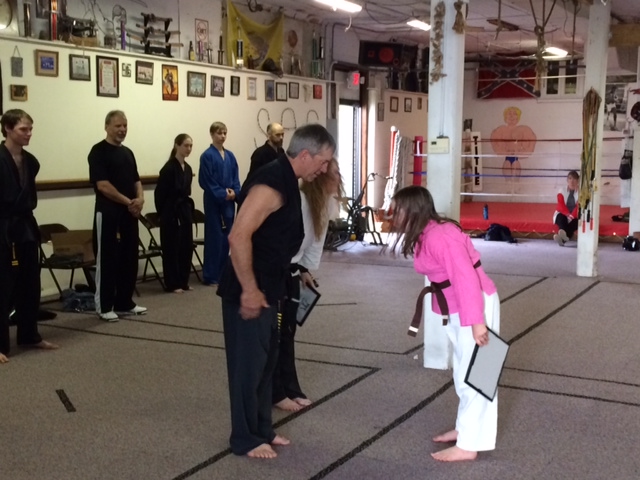When a prospective student asks what to look for in a school, he is usually directed to look for certified instructors, military and police experience, and even expensive tuition as a mark of quality education. While these things may be good, some of the best schools I have attended were inexpensive, and staffed by civilians. What the best schools all have in common, is the feeling of a karate Dojo. Dojo is a Japanese word meaning “place of the way”, or “a place of learning”. Here in America it usually means, specifically, a martial arts school; and can refer to the building where the martial artists train, or to the organization itself. I don’t mean they all trace their roots to the Orient, require the wearing of a gi, and train barefoot. Some of them do, of course; but others trace their roots from a very western military tradition. Some have no military roots, but have developed from the civilian training /competition world; yet they all bear most or all of the following trademarks of a dojo.
The traits of a dojo, as I see them, are rank, respect, community, mentorship, and learning through instruction.
The dojo trains its students, not for a qualification, test, or rank, but for the pursuit of excellence. One common criticism of police and military training is that these organizations train students to qualify on an artificial test, rather than to study for mastery. A good dojo recognizes progress through ranks, awards, and insignia, but does not see the rank/ insignia as an end in itself.

A dojo cultivates a culture of respect through uniforms, honorifics, and ceremonies. This respect runs both directions: from students to teachers, and teachers to students. This is, perhaps, the most outwardly recognizable characteristic of a dojo, and also the most misunderstood. The outward trappings of respect can be easily imitated, without adopting the culture of respect they are meant to signify, much as the physical manifestations of love may be imitated without expressing actual love: “Would you betray the Son of Man with a kiss? “
This culture of respect is built on a community of fellowship, whereby an instructor recognizes that he must have students to teach and in order to understand his art, just as the student needs a master to introduce him to the art. You don’t truly understand something until you are able to explain it to a novice.
“A teacher is a student who teaches in order to continue his study.”- Mochizaki Minoru Sense
Because of this, dojos develop their instructors in- house, and while they may have instructors with a wide variety of experience from other schools and or police/military training, they do not import “expert” or “celebrity” instructors from outside their ranks. This forges mentor/ apprentice relationships, wherein students are expected to continue their education through teaching other students, and reinforces a culture where no one has arrived at perfection, but all are students of the art.

Dojo instructors are expected to demonstrate excellence in the art that they teach; they teach, and do. You never see a dojo instructor take the attitude, “I don’t have to do that anymore”; they instruct by demonstration, and they lead by example.
Finally, dojos are not profitable organizations. I say this with trepidation, because any organization can be unprofitable through sheer ineptitude, but the dojo system is a pre-industrial model, and therefore difficult, if not impossible, to turn into a successful business.
“A true martialist is poor, for he trains for the spirit of the thing, rather than for gold.” Musashi